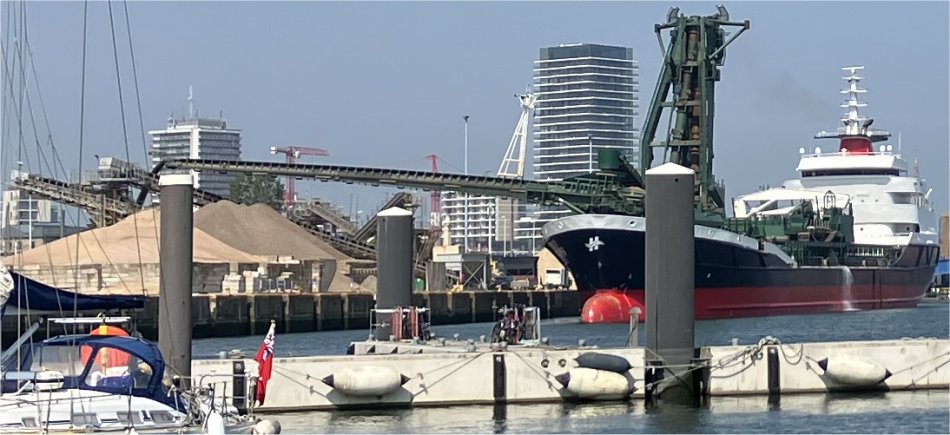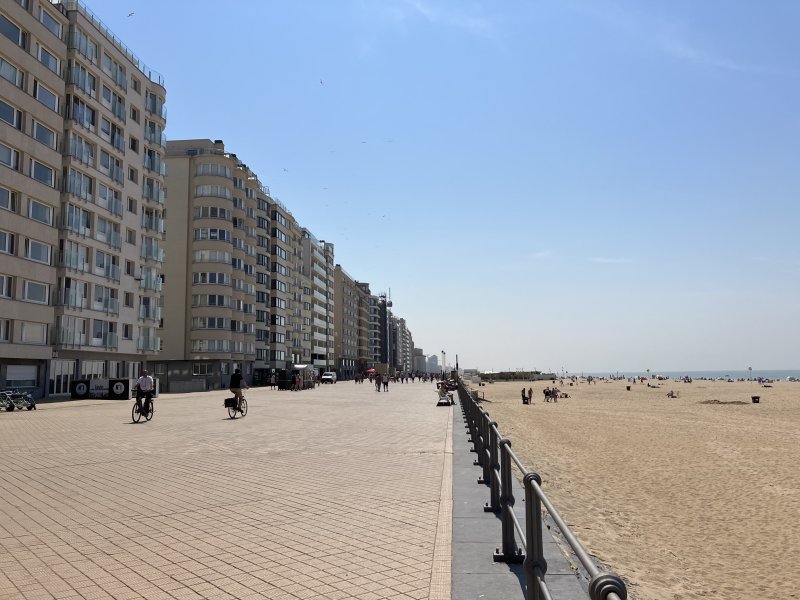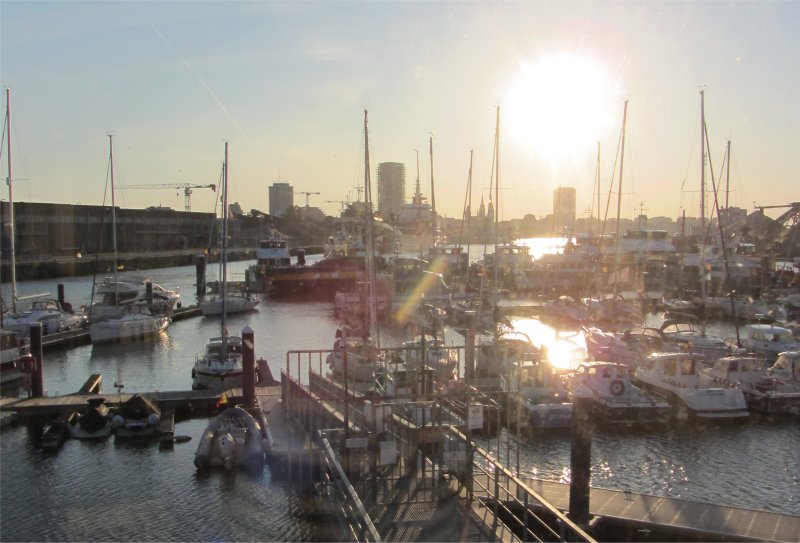 Dredger Discharging Gravel onto Quayside |
We attended various jobs: check the oil level, clean all the mud out of the anchor locker, clean off the inches of mud off the anchor etc, and check the tram times into the town centre.
Once we were all sorted, a chap came up to say hello. He had sailed across from Titchmarsh the previous Thursday, and intended to return the following morning. He often sailed across to Ostend. We enjoyed a chin wag with him before we headed off to get a tram into town. The 65km-long Belgium coastline is fronted by wide white-sand beaches, backed by dunes and dotted every few kilometres with resort towns. The tram we alighted travelled the full length between De Panne and Knokke.
The tram ride was standing room only but quick and painless, and we were soon walking down to the sea front. Ostend is the largest city on the Belgian Coast and its only truly year-round destination. Along its wide white-sand beach is a spacious promenade surveyed by an interesting mix of midrise architecture atop cosy seafront cafes with glassed-in terraces. It is visited by many day-trippers heading to the beaches, especially during July and August. Tourists from inland Belgium and from abroad mostly arrive by train (day trips) and head for the closest beach area, het Klein Strand (small beach), located next to the pier. The locals and other residents in Belgium usually occupy the larger beach, het Groot Strand (large beach).
We passed several stalls selling all manner of sea produce, surrounded by swarms of people eating their wares from small cartons. Not for me I'm afraid. Down by the pier we came to the Klein Strand. It was in the process of being landscaped, though why on earth anyone would want a beach landscaped is beyond me. The amazing spectacle was a solitary couple sunbathing on the beach. They lay there in the sun oblivious to diggers, a bulldozer and trucks which were encroaching on the area where they lay. Passers by were gobsmacked by this sight, some laughing and some taking photographs.
 Solitary Couple Sun Worshiping on the Klein Strand |
 Groot Strand |
 Esplanade |
A stout lady sat down at a table next to us. She must have been eavesdropping to our conversation because she suddenly turned around and gave us a broad smile. We soon learned she came from Antwerp. She and her husband were staying with friends in Ostend. She understood the vagaries of British politics very well and laughed openly about a recent Nicola Sturgeon fiasco, and grimaced also at the latest Donald Trump dilemmas.
She explained to us the situation within Belgium, where they have the predominant north Flemish part of the country, the French-speaking Walloon region of southern Belgium, and another group who tried to control both halves. It was almost an impossible task to run the country with these three factions, and also very expensive. Her husband joined us and we all had a giggle about the state of affairs before we parted.
 Sunset Over the Marina and Port |
